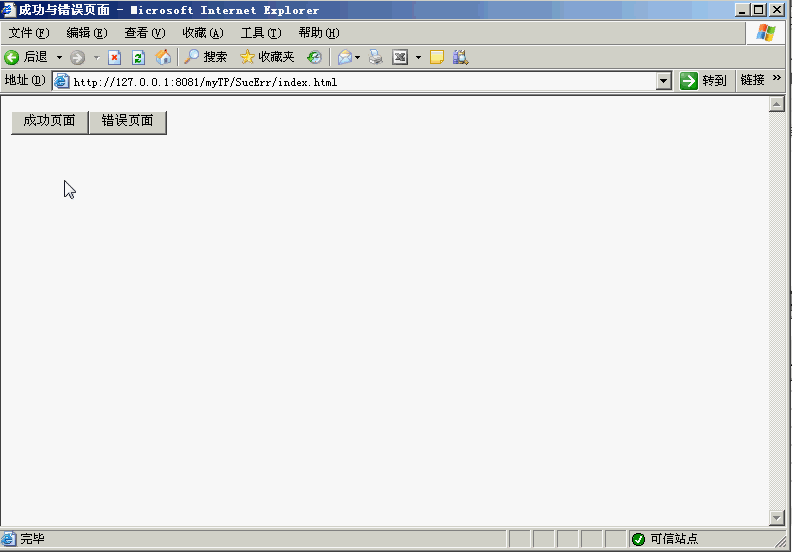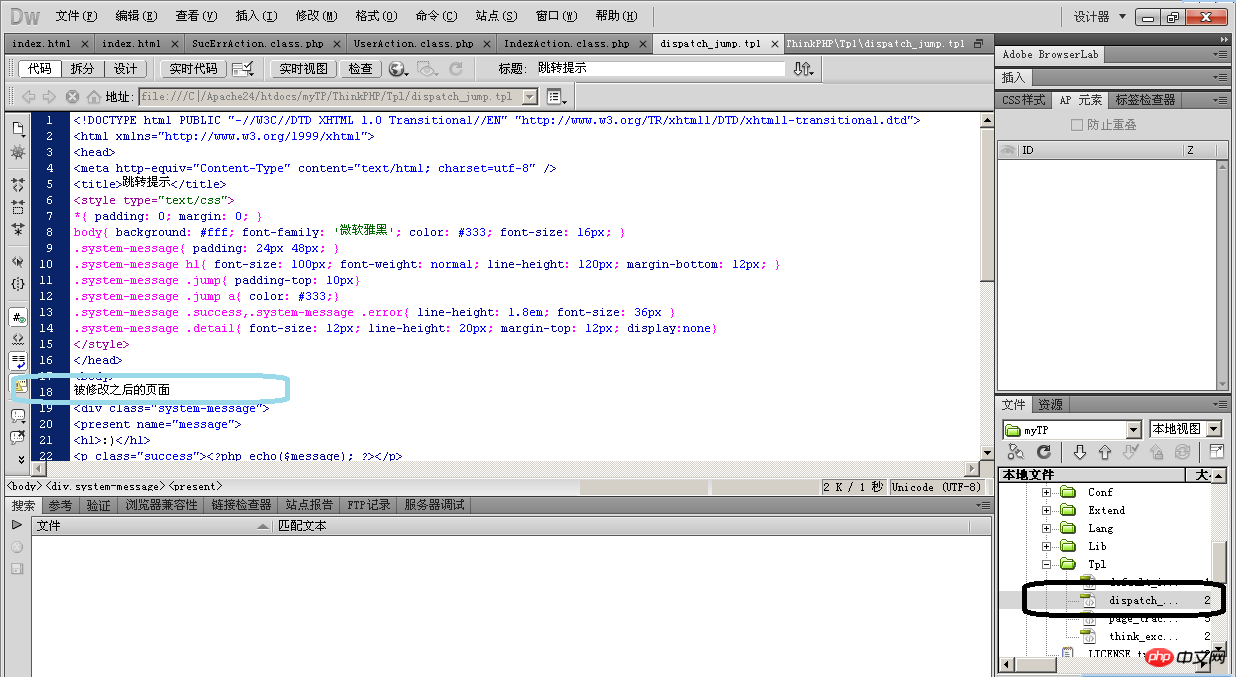
This article mainly introduces the method of modifying the successful and failed jump pages in ThinkPHP3.1.x, involving the setting and modification operation skills of the relevant jump codes in the underlying source files of thinkPHP. Friends in need can refer to the following
The example of this article describes the method of modifying the successful and failed jump pages in ThinkPHP3.1.x. Share it with everyone for your reference, the details are as follows:
In ThinkPHP, success and failure prompt pages are already included. Just call it automatically in the Action method.
For example, there is the following SucErrAction.class.php in Lib\Action:
##
<?php
class SucErrAction extends Action{
public function index(){
$this->display();
}
public function success1(){
$this->success("成功提醒!",U("SucErr/index"),3);
}
public function error1(){
$this->error("错误提醒!",U("SucErr/index"),3);
}
}
?><!DOCTYPE html PUBLIC "-//W3C//DTD XHTML 1.0 Transitional//EN" "http://www.w3.org/TR/xhtml1/DTD/xhtml1-transitional.dtd"> <html xmlns="http://www.w3.org/1999/xhtml"> <head> <meta http-equiv="Content-Type" content="text/html; charset=utf-8" /> <title>成功与错误页面</title> </head> <body> <button onclick="javascript:window.location.href='__APP__/SucErr/success1'">成功页面</button> <button onclick="javascript:window.location.href='__APP__/SucErr/error1'">错误页面</button> </body> </html>
SucErrAction.class.php, you cannot define the success method and error method yourself. These are inherent methods in the system's Action abstraction. Declare the success method and error method. The method is to override after inheritance, which will make ThinkPHP run normally.
However, the success and failure prompt pages that come with the system cannot meet the needs of the website.
.\ThinkPHP\Tpl\dispatch_jump.tpl
I will write some words on line 18 to achieve the picture above As a result, you can write any front-end language according to your needs on this page. The$this->success() or $this->error() will jump in the ThinkPHP method. Go to this page.

The above is the detailed content of Introduction to the method of modifying successful and failed jump pages in TP3.1.x. For more information, please follow other related articles on the PHP Chinese website!
 Detailed explanation of linux dd command
Detailed explanation of linux dd command
 Unable to start your computer properly
Unable to start your computer properly
 How to open TIF format in windows
How to open TIF format in windows
 wap browser
wap browser
 How to open url file
How to open url file
 Win11 My Computer Added to Desktop Tutorial
Win11 My Computer Added to Desktop Tutorial
 How to use btbook magnetic search
How to use btbook magnetic search
 How to solve the problem that wlan does not have a valid ip configuration
How to solve the problem that wlan does not have a valid ip configuration
 Main contents of database conceptual design
Main contents of database conceptual design




